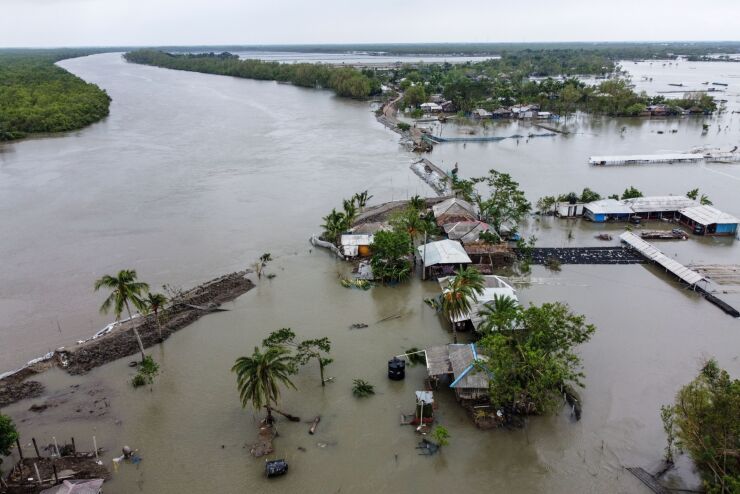Digital tools are key to mitigating and covering flood risks, according to a
Factors like increased coastal urbanization, volatile weather patterns, and ever-rising sea levels heighten flood risk and put more properties, and people, at risk. But insurance alone is not enough to protect lives and build resilience, according to the report. Digital tools like data analytics, risk modeling, or satellite tech are critical to more accurately assessing climate risks and accelerating insurance processes in cases of natural-catastrophes. A combination of innovative technology with government and community involvement is also a necessity, according to the report, to form a more resilient market.
"Risk transfer is just one tool in the resilience toolkit," Triple-I CEO Sean Kevelighan said in the report. "The insurance industry's understanding of loss trends and expertise in assessing and quantifying risk must be joined at the hip to technology, public policy, finance, and science. We need to partner with communities and businesses at every level to promote a broad resilience mindset focused on pre-emptive mitigation and rapid recovery."
The report shares two approaches to transformation in climate resiliency; the first, in data and communication and the second, a focus in digital collaboration and innovation.
Tools in data analytics and digital communications, including satellite technology and IoT as mentioned in the report, harness data to create more efficient, accurate processes in pricing and underwriting, as well as in claims.
"A lot of progress has been made in terms of affordability," Matt Junge, Head of Property Underwriting, U.S. Regional and National, at Swiss Re, said in the report. "More granular mapping enables insurers to more closely customize policies and pricing to the risk characteristics of specific properties."
The report also notes the increasing use of
The use of these digital tools not only improve costs for consumers and risk assessment accuracy, but data analysis and interpretation also "uncover issues and trends that might once have gone unnoticed or been insufficiently quantified to be useful," says the report, and "improved curation and analysis of data can expose inequities and prompt government actions to protect life and property in neighborhoods far from the coastline."
Although only 35% of insurers surveyed by Capgemini use digital tools, Global Insurance Industry Leader at Capgemini Seth Rachlin stated in the report that "risk prevention based on data and behavioral science is at the top of the agenda for future-focused insurers," and that more insurance organizations should "deploy IoT, cloud, artificial intelligence, and machine learning to improve risk management, develop products, transform claims processing, and enhance customer experience" in order to create a more resilient market.






